
Catalog excerpts
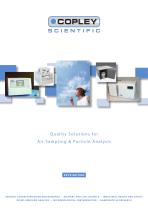
Quality Solutions for Air Sampling & Par ticle Analysis AE ROSOL CH AR AC T E RI SAT I ON AN D RE SE ARCH • M I L I TARY AN D CI V I L DE F E N CE • INDU ST R IA L H EA LT H A ND SA FET Y DI E SE L E M I SSI ON AN ALYSI S • M I CROB I OLOG I C AL CON TAM I N ATI ON • NA NO PA RT IC L E R ESEA RC H
Open the catalog to page 1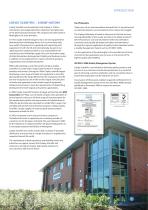
COPLEY SCIENTIFIC – A BRIEF HISTORY Copley Scientific was founded by Frank Copley in 1946 to manufacture and supply laboratory equipment and glassware to the pharmaceutical industry.The company has been based in Nottingham, UK, since that date. Today, users of our instrumentation demand that it is (a) precise and accurate (b) simple to use and operate and (c) robust and rugged. In 1957, Copley Scientific began to focus on test equipment for pharmaceutical solid dosage forms. As a result we have built up a wealth of experience in supplying and supporting such equipment in both the UK and...
Open the catalog to page 3
MSP CORPORATION - PIONEERING AEROSOL RESEARCH Founded in 1985 by Professor Ben Y H Liu and Professor Virgil A Marple, both acknowledged experts in the field of air sampling and particle analysis, MSP Corporation is a global applied aerosol/particle technology company providing advanced products and services to the world of aerosol research. Copley Scientific distributes MSP’s air sampling and particle analysis products exclusively in Europe. Professor Benjamin Y H Liu Professor Benjamin Y H Liu is the CEO and President of MSP Corporation, a company he co-founded with Professor Virgil...
Open the catalog to page 4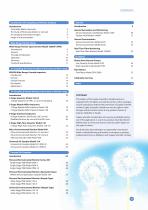
Introduction (Air Sampling and Particle Analysis) Particulate Matter (Aerosols) 4 The Study of Particulate Matter or Aerosols 4 Air Sampling and Particle Analysis 4 Wide Range Particle Sizing Wide-Range Particle Spectrometer Model 1000XP (WPS) Air Sampling & Particle Analysis in the Coarse to Nano range MOUDI Wide-Range Cascade Impactors Aerosol Generation and Monitoring Aerosol Generator and Monitor Model 1500 Aerosol Concentration Aerosol Concentrator Model 4220 Aerosol Concentrator Model 4240 Real-Time Fibre Monitoring Real-Time Fibre Monitor Model 7400AD Rotary Vane Vacuum Pumps Low...
Open the catalog to page 5
AIR SAMPLING AND PARTICLE ANALYSIS PARTICULATE MATTER (AEROSOLS) AIR SAMPLING AND PARTICLE ANALYSIS Particulate Matter (PM), alternatively referred to as Aerosols, Fine Particles or Particulates, comprises small particles of chemically and physically diverse solid or liquid suspended in a gas. In the case of ambient air, this Particulate Matter is a complex mixture of solid and liquid particles many of which, such as bacteria, dust, pollen, smoke, spores and soot, can be hazardous to health. More specific particulate matter generated by industrial and construction processes can be equally,...
Open the catalog to page 6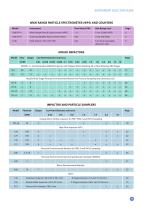
INSTRUMENT SELECTON GUIDE WIDE RANGE PARTICLE SPECTROMETER (WPS) AND COUNTERS Model Wide-Range Particle Spectrometer (WPS) Scanning Mobility Spectrometer (SMS) 5-20 (User selectable detection limit MOUDI IMPACTORS Model Cut-Point Diameter (microns) MOUDI - II : 2nd Generation MOUDI Impactor with Stepper Motor Rotating (R) or Non-Rotating (NR) Stages 120 Marple Multi-Stage Personal Environmental Monitor for Personal Sampling and Laboratory Use 135-6 IMPACTOR AND PARTICLE SAMPLERS Model Cut-Point Diameter (microns) 0.25 4-Stage Micro-Orifice Impactor: for PM1, PM2.5 and PM10 Sampling 100-SA 3...
Open the catalog to page 7
Wide Range Particle Sizing INTRODUCTION The miniaturised Wide-Range Particle Spectrometer Model 1000XP (WPS) is a must-have instrument for the aerosol and environmental research laboratory. It is the only general purpose high-resolution spectrometer available on the market that combines laser light scattering, differential mobility analysis and condensation particle counting in a single instrument to measure the diameter and number concentration of aerosol particles in a sampled air stream. The differential mobility analyser (DMA) and the condensation particle counter (CPC) can measure...
Open the catalog to page 8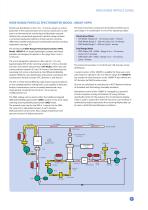
WIDE RANGE PARTICLE SIZING WIDE-RANGE PARTICLE SPECTROMETER MODEL 1000XP (WPS) The three instrument components (LPS, DMS and SMS) can be used singly or in combination in one of five operating modes: Particle size distribution in the 5 nm –10 micron range is a critical parameter in the characterisation of an aerosol cloud and is a vital area in environmental air monitoring and laboratory research. Hitherto, the conventional approach to particle sizing has been a somewhat haphazard collection of laser particle counting, differential mobility analysing and condensation particle counting...
Open the catalog to page 9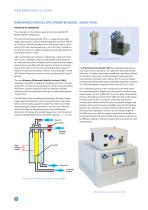
WIDE RANGE PARTICLE SIZING WIDE-RANGE PARTICLE SPECTROMETER MODEL 1000XP (WPS) PRINCIPLE OF OPERATION The schematic on the previous page shows the standard WPS Model 1000XP configuration. The Laser Particle Spectrometer (LPS) is a single-particle, wideangle optical sensor used for measuring particle size from 350 nm to 10 microns. Particles are drawn from the aerosol inlet at a flow rate of 0.70 L/min and focused with a 4.5 L/min flow of sheath air towards the centre of a ribbon-shaped laser beam generated by a laser diode (780 nm, 5 mW). Light scattered by each particle is collected by a...
Open the catalog to page 10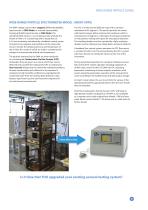
WIDE RANGE PARTICLE SIZING WIDE-RANGE PARTICLE SPECTROMETER MODEL 1000XP (WPS) The DMA voltage can be either stepped (Differential Mobility Spectrometer or DMS Mode) or scanned exponentially (Scanning Mobility Spectrometer or SMS Mode). The cylindrical DMA works in a re-circulating mode whereby the sheath air flow is in a closed loop with a steady flow of 4.5 L/min accurately maintained by a feedback control system to improve size response and resolution. At the same time, sensors monitor the absolute pressure and temperature of the air flow, the results of which are used to compensate for...
Open the catalog to page 11
WIDE RANGE PARTICLE SIZING W<de-P.;mge Particle Spectrometer Remote Control Shut Down i| iH I ilili f (— 1 »H [Ttat hx.it i Im*.., Simple Flaw Shterti Flow Laser Curirnl Werklrm Fluid Sample Flow Lltit Currtnl OuOO ifti 2. Correct StatusfMonitor Screen) Lower Particle* Sire (ran) I |0 tj Uppw rHrBdtSu;* trow, | ]MM Ca—l| Sl^j The sequence for automatic operation of the 1000XP is as follows: 1. Launch the programme: allow 15 minutes to stabilise 2. Check for correct status of the main operating parameters on 3. Set up the instrument by choosing or creating a measurement recipe from one of...
Open the catalog to page 12All Copley Scientific catalogs and technical brochures
-
Driving Results in Inhaler Testing
163 Pages
-
Copley-Inhaler-Testing-Brochure
150 Pages
-
Pharmaceutical Testing
76 Pages
Archived catalogs
-
Inhaler Testing Brochure
132 Pages







